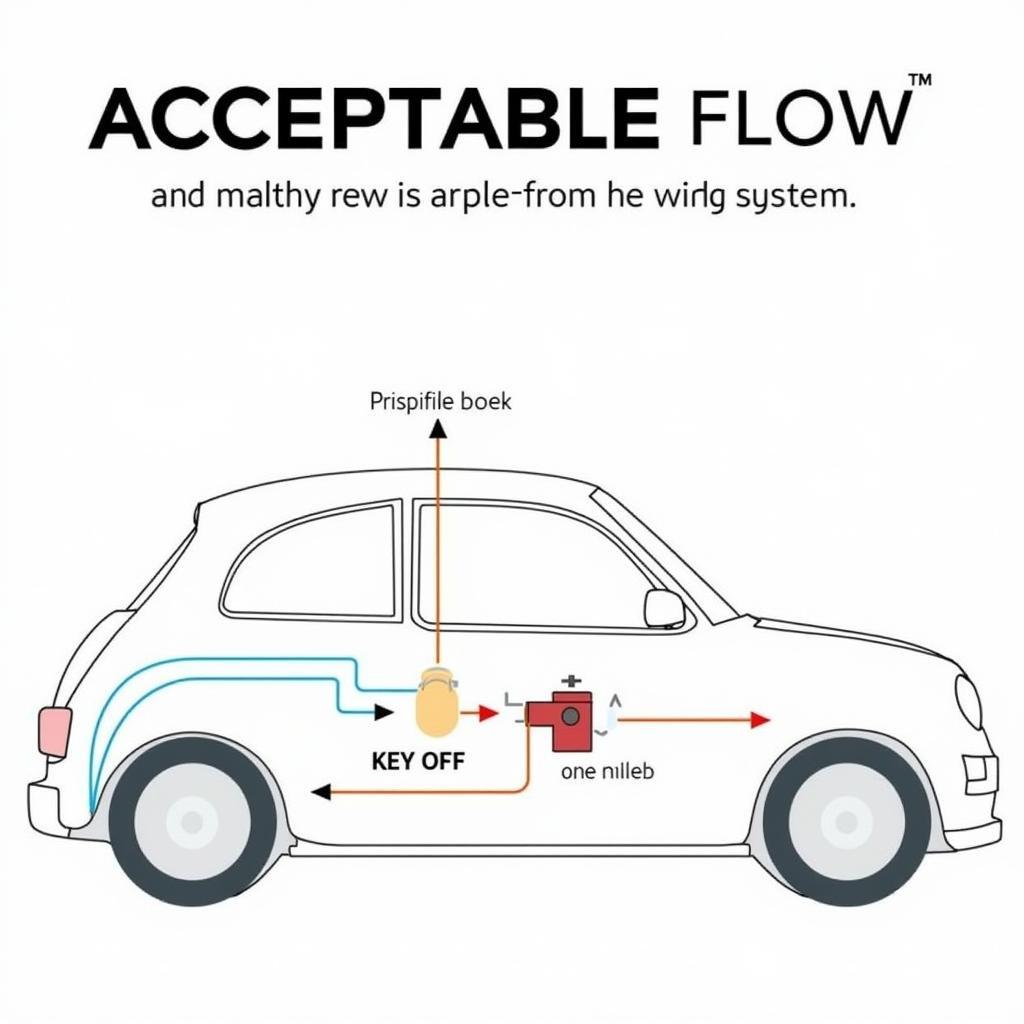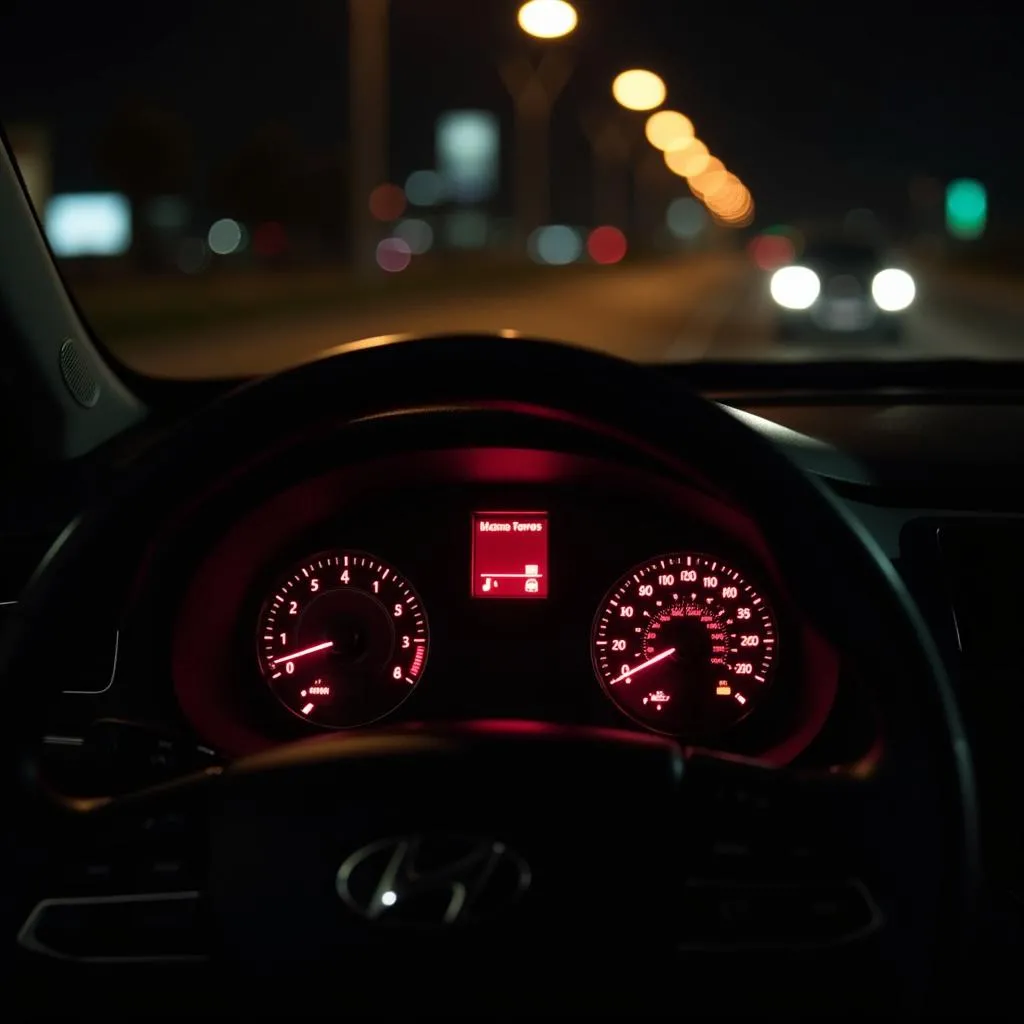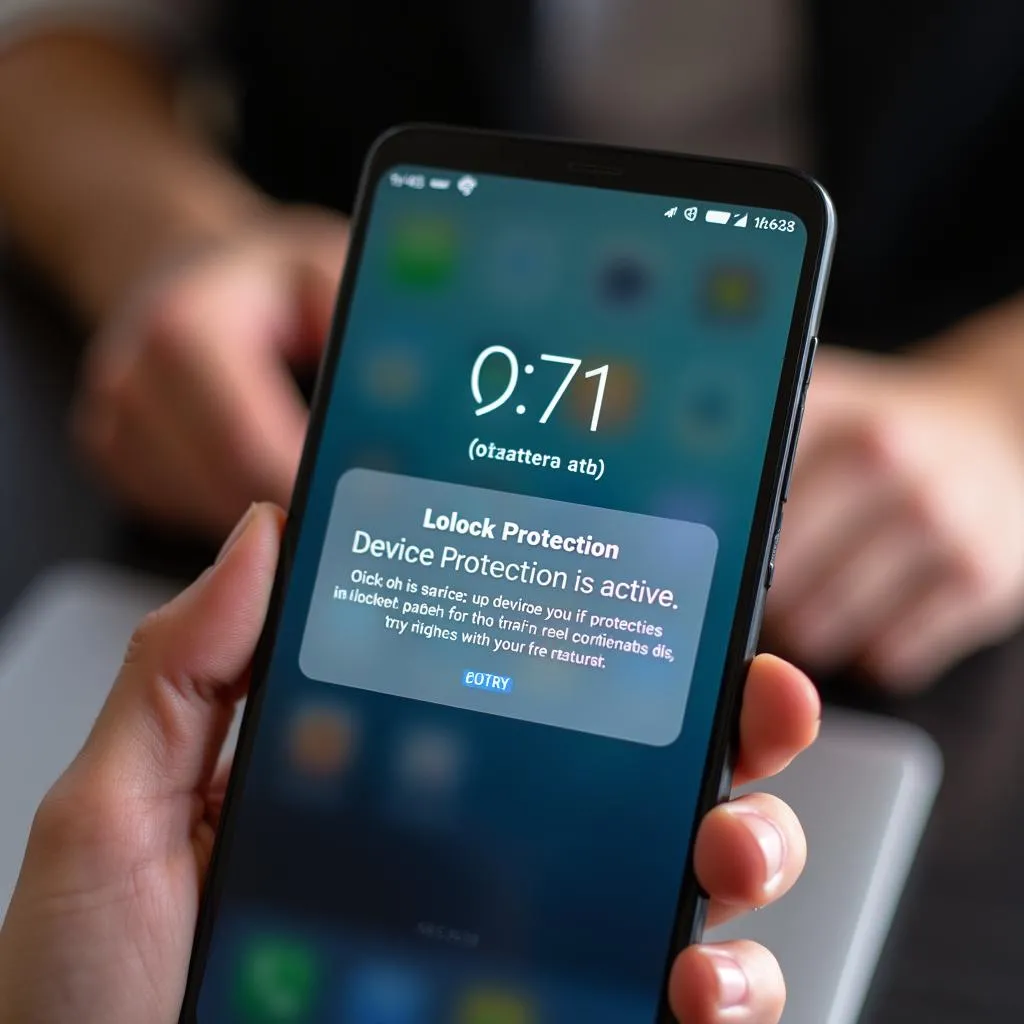Understanding the acceptable current draw on a car battery is crucial for maintaining its health and preventing unexpected starting problems. A healthy battery ensures reliable starts and powers various electrical components in your vehicle. Knowing what constitutes normal and excessive parasitic draw can save you time, money, and frustration down the road. acceptable current draw on a car battery
What is Acceptable Battery Drain?
A car battery, even when the engine is off, powers essential systems like the clock, radio memory, and security system. This constant power consumption is known as parasitic draw or dark current. A small amount of parasitic draw is normal, but excessive drain can lead to a dead battery. So, what’s the magic number for acceptable current draw on car battery? Generally, a draw of 50 milliamps (mA) or less is considered acceptable for most modern vehicles.
 Diagram showing acceptable battery draw
Diagram showing acceptable battery draw
How to Test for Parasitic Draw
Testing for excessive parasitic draw is a relatively simple process, but requires a multimeter. Here’s a step-by-step guide:
- Prepare your vehicle: Park your car and turn off all accessories, lights, and the ignition.
- Set up your multimeter: Set your multimeter to the DC amps setting (usually 10A or 20A range).
- Disconnect the negative battery cable: Carefully disconnect the negative (-) battery cable from the battery terminal.
- Connect the multimeter: Connect the red lead of the multimeter to the negative battery terminal and the black lead to the disconnected negative cable.
- Observe the reading: The multimeter will display the current draw. A reading above 50mA indicates a potential problem.
Common Causes of Excessive Battery Draw
Several issues can cause excessive battery draw. Some common culprits include:
- Faulty alternator: A failing alternator may not charge the battery properly, leading to a gradual discharge.
- Interior lights: Leaving interior lights on, even for a short period, can significantly drain the battery.
- Malfunctioning door latch switches: A faulty door latch switch can trick the car into thinking a door is open, keeping interior lights or other systems active.
- Aftermarket accessories: Improperly installed aftermarket accessories, like stereos or alarms, can contribute to excessive draw.
- Glove box or trunk lights: These lights can remain on if their switches are malfunctioning.
“A common mistake people make is assuming a new battery will solve their drain issue,” says automotive electrical specialist, David Miller. “While a failing battery can cause starting problems, excessive parasitic draw is often the underlying culprit.”
How to Fix Excessive Battery Draw
Once you’ve identified excessive draw, acceptable battery draw the next step is pinpointing the source. You can do this by systematically removing fuses one by one while observing the multimeter reading. A significant drop in the reading after removing a specific fuse indicates the circuit containing the problem.
You can also perform a parasitic draw test with test light, which is a simpler, though less precise, method. This involves connecting a test light between the negative battery terminal and the disconnected negative cable. A bright light indicates a significant draw.
“Remember, even seemingly minor electrical issues can lead to significant battery drain,” adds Miller. “Regularly checking for parasitic draw is a good preventative maintenance practice.”
What is an Acceptable Amp Draw on a Car Battery?
Milliamps (mA) and amps are units of electrical current. 50mA is equivalent to 0.05 amps. So, an acceptable amp draw car battery would be anything below 0.05 amps. This is another way to express the acceptable current draw on car battery. For specific vehicles, like the jeep liberty battery drain, there may be specific guidelines available.
Conclusion
Understanding acceptable current draw on a car battery is essential for keeping your vehicle running smoothly. By regularly checking for excessive parasitic draw, you can prevent unexpected dead batteries and identify potential electrical problems early on. Remember, a small investment in preventative maintenance can save you from significant headaches and expenses in the future. So, grab your multimeter, check your battery draw, and enjoy the peace of mind that comes with a healthy car battery.
FAQ
- What is the normal parasitic draw on a car battery? Generally, 50 milliamps (0.05 amps) or less is considered acceptable.
- How do I test for parasitic draw? You can use a multimeter or a test light to check for excessive battery drain.
- What can cause excessive battery drain? Common causes include faulty alternators, interior lights left on, malfunctioning door switches, and aftermarket accessories.
- How do I fix excessive battery drain? Locate the source of the drain by systematically removing fuses and observing the change in current draw.
- What should I do if my battery keeps dying? Have your car’s electrical system checked by a qualified mechanic to diagnose and fix the underlying issue.
- Can a bad battery cause parasitic draw? A bad battery itself doesn’t cause parasitic draw, but it can make the car more susceptible to its effects.
- How often should I check for parasitic draw? It’s a good practice to check your battery draw every few months as part of your regular car maintenance.



